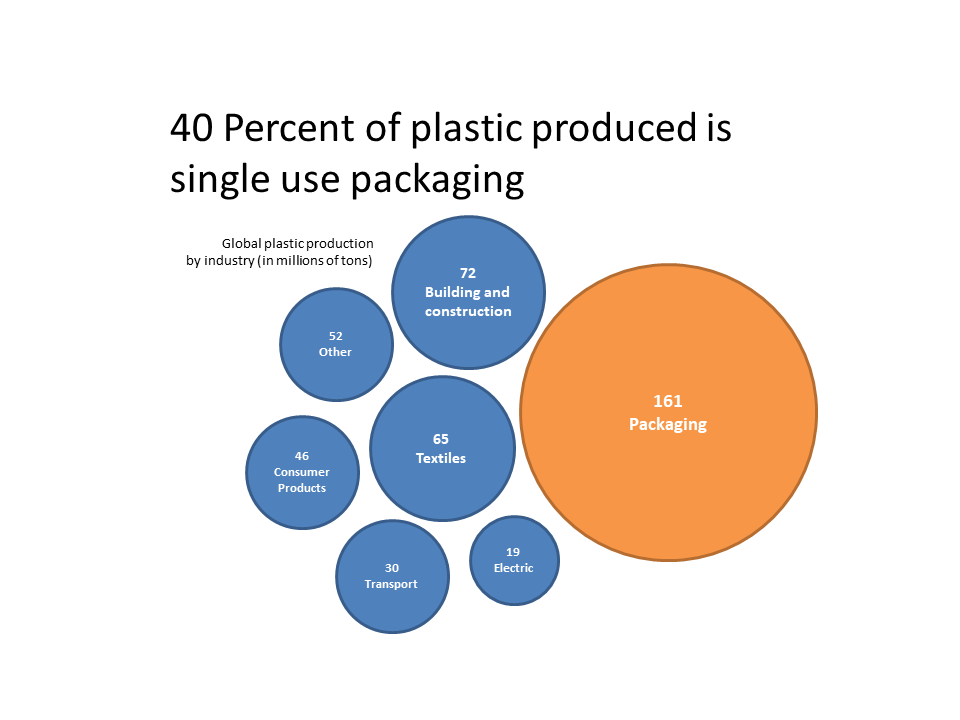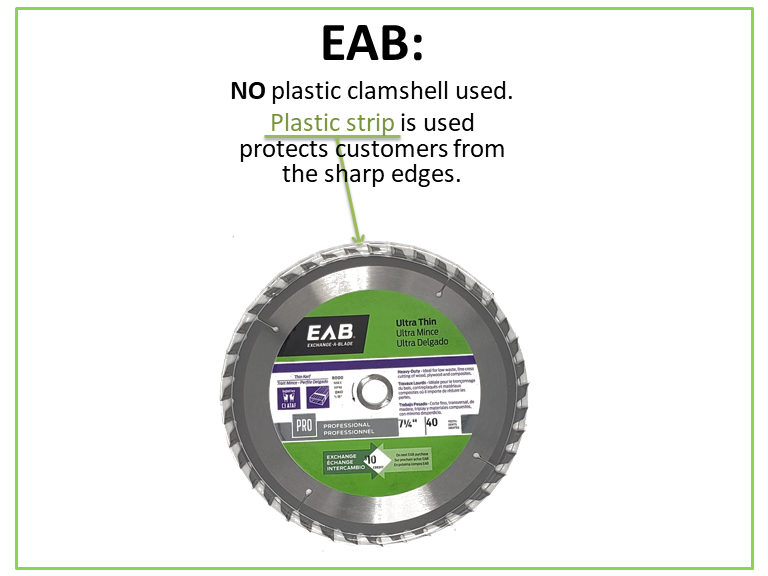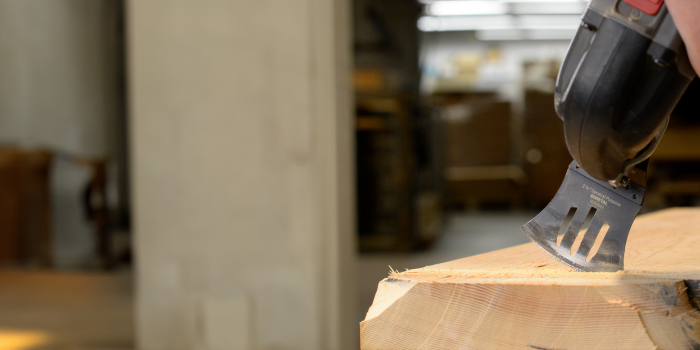The Plastic Packaging Problem
2019/10/30
The saw blade was on sale for only $9.99, securely packed inside two very thick layers of tough plastic, it looked permanently confined. After a lot of time and effort, I was able to get the package open almost cutting myself, like many others who seek medical treatment every year due to cuts and other injuries from attempting to open clamshells and similar packages. It is ironic how it took me a few minutes to open but it will take over 400 years to biodegrade.
You probably didn’t know but product packaging generates more plastic waste than any other industry. According to the University of California, Santa Barbara 40% of plastic produced is packaging which is used once and then discarded.

Clamshell is used by retailers because the product is visible, it can be hung or freestanding, and it’s harder to steal but with creativity and will, EAB has been able to eliminate most plastic from most of its packaging and we work every day become more sustainable, from product to package. Just look at our circular saw blades, no clamshell and minimum packaging. It may seem simple but there are a lot of considerations, from shipping and handling to public perception of a product with a different package.

Is recyclable really recycled?
Unfortunately no, 91% of all plastic is not recycled. Of the 8.3 billion metric tons of plastic humans have produced, 6.3 billion metric tons have become plastic waste. Of that, only nine percent has been recycled, according to a study published in the peer-reviewed journal of Science Advances.
The problem with single use “recyclable” plastic, such as clamshell packaging, is that it is not being collected, and most material recovery facilities can’t even sort them out from the other materials due to the use of sticky labels or cardboard backing on blister packs.
The good news is that consumers are seeking companies that care about environmental issues. They are buying products that are more sustainable and come in sustainable packaging at twice the rate of other products, according to a 2018 Neilson survey.
Plastic in Numbers:
- FACT #1 - 8.3 BILLION Metric Tons of plastic has been produced since plastic was introduced in the 1950s. The amount of plastic produced in a year is roughly the same as the entire weight of humanity.
- FACT #2 - Virtually every piece of plastic that was ever made still exists in some shape or form
- FACT #3 - 91% of plastic waste isn’t recycled. And since most plastics don’t biodegrade in any meaningful sense, all that plastic waste could exist for hundreds or thousands of years.
- FACT #4 - 500 MILLION plastic straws are used EVERY DAY in America. That’s enough to circle the Earth twice.
- FACT #5 - Nearly TWO MILLION single-use plastic bags are distributed worldwide every minute.
- FACT #6 - 100 BILLION plastic bags are used by Americans every year. Tied together, they would reach around the Earth’s equator 773 times!
- FACT #7 - ONE MILLION plastic bottles are bought EVERY MINUTE around the world — and that number will top half a TRILLION by 2021. Less than half of those bottles end up getting recycled.
- FACT #8 - 8 MILLION METRIC TONS of plastic winds up in our oceans each year. That’s enough trash to cover every foot of coastline around the world with five full trash bags of plastic…compounding every year.
- FACT #9 - There is more microplastic in the ocean than there are stars in the Milky Way.
- FACT #10 - If plastic production isn’t curbed, plastic pollution will outweigh fish pound for pound by 2050.
Source: https://www.earthday.org/fact-sheet-the-plastic-threat-to-human-health/
Solutions
Here are just some of the things we can do to reduce the plastic problem we have today.
Avoid disposable plastics – 91% of the plastics in our daily lives are used once and then discarded. Good examples are grocery bags, disposable cutlery, straws, coffee-cup lids and most of the packaging on items we buy…like that clamshell pack that came with my saw blade.
- Stop buying water – Every year close to 20 billion plastic bottles are thrown in the trash or end up in the ocean. Just carry a reusable bottle in your bag.
- Avoid microbeads – The little plastic scrubbers found in some beauty products are so tiny that they slip through water-treatment plants or end up as food to some marine animals.
- Purchase recycled or secondhand items - New items such as toys, electronic gadgets and many tools come with all kinds of plastic packaging—including those frustrating hard-to-open clamshells.
- Recycle - Less than 10% percent of plastic packaging is recycled, we need to do a better job both, at a personal and government level.
- Put pressure on manufacturers - If you think that a company should do better with their packaging, let them know. Send a letter, an email, post on social media, or just give your money to a more sustainable competitor.
With plastic waste continuing to accumulate in landfills and in our oceans, plastic pollution has never been so pressing. Here at EAB, we believe that creating more plastic just adds to the problem, not the solution. That’s why every day we strive to reduce or eliminate plastic from all our packaging. This is embedded in our green philosophy, our exchange program saves tons of steel from going into landfills, we use minimal or no plastic in our product packaging and our sales team drive hybrid vehicles across Canada and the US.
We want to be part of the solution and we hope you join us in solving the plastic problem.
Exchange for a better future!
Sources:
https://www.nationalgeographic.com/news/2018/05/plastics-facts-infographics-ocean-pollution/
https://www.globalcitizen.org/en/content/plastic-pollution-facts/
https://www.earthday.org/2018/03/07/fact-sheet-end-plastic-pollution/
https://www.earthday.org/2018/03/07/fact-sheet-end-plastic-pollution/
https://www.forbes.com/sites/erikkobayashisolomon/2019/06/24/solving-the-plastic-problem/#13f70db33ec7
https://www.nationalgeographic.com/environment/2019/07/story-of-plastic-common-clamshell-packaging-recycling-nightmare/
https://www.nationalgeographic.com/environment/2019/07/story-of-plastic-common-clamshell-packaging-recycling-nightmare/
https://www.sheffield.ac.uk/news/nr/158-1.175149





.jpg)
